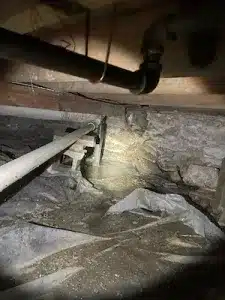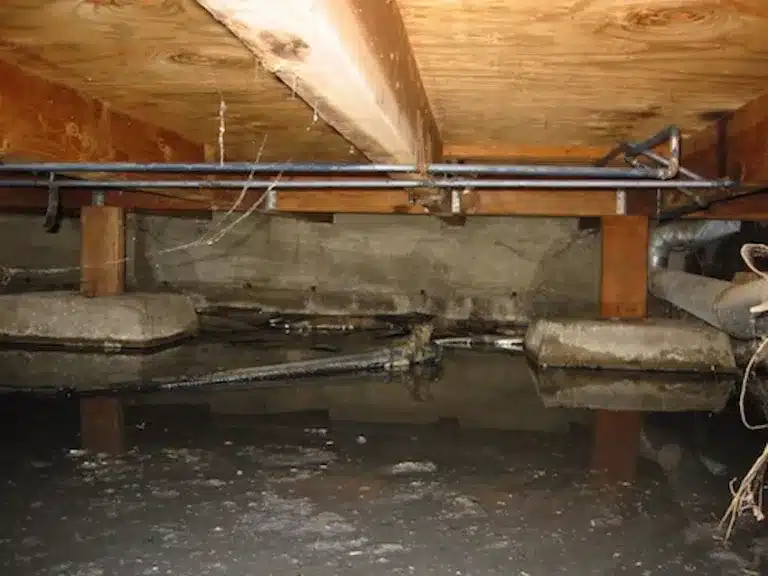As unpleasant as inspecting your crawl space may be, it is considered a necessary evil. Inspect your crawl space to help detect structural issues, infestations, leaks and more. Inspecting your crawl space can be a bit more complex than you may anticipate. Besides the tiny space, there can be poisonous critters and bugs, animals, leaks, sewage spills, mold, standing water and other breathing hazards. You should inspect your crawl space about every 6 months. We have complied a list of ten safety tips for your inspection.
10 Safety Tips for a Safe Crawl Space Inspection
Cover Your Body
- To protect your skin from coming in contact with any contaminants you should wear a coverall or some type of body suit. Tyvek is a popular option.
Use a Respirator or N95 Mask
- Since there are many potential breathing hazards it is important to take precautions to protect your lungs. N95 masks can do if a respirator is not available.
Inform Others
- Before going into your crawl space let someone else know what you are doing and how long you expect to be down there.
Take a Phone
- This goes along with letting someone else know you are going to be down there but make sure to have your phone with you so you can call for help if there is an emergency. Pro Tip: Put your phone in a plastic bag to keep it from getting dirty and damaged.
Flashlight or Headlamp
- Crawl Spaces are dark – you’re going to want light to see. Headlamps are preferred so you can have both hands free.
Wear Glove
- You will come in contact with a lot of dirt/mud and potentially animal excrement and other contaminants. If you have any open wounds it is important to cover them so bacteria can’t come in contact.
Wear Safety Glasses
- You don’t want unknown debris getting in your eyes – wear glasses.
Wear a Hard Hat
- Crawl spaces are very tight and don’t provide a lot of wiggle room. It is very easy to hit nails that are coming through the subfloor as you navigate your way down there.
Be Aware of Surroundings
- Make sure to not lean on or put any weight on any plumbing lines. Watch out for electrical lines. Look ahead for animals and critters. Watch out for standing water. Always test standing water for an electrical current – This can be done using this tool.
Knee Pads
- Due to limited space, you will be on your knees crawling. While not necessary, do your knees a favor and wear knee pads.
In addition to inspecting your crawlspace every 6 months, other inspections may be warranted if you notice foul odor or drafts in your home, if indoor humidity is higher than normal, you notice a pest infestation, floors directly above crawl space are beginning to be uneven or utility bills are unusually high.
If you come across standing water, sewage, mold or any water damage give Vista Restoration a call! What tips do you have? We would love to hear your crawlspace experiences in the comments below!



